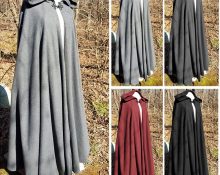
creativecommons.org
The patchwork type of sewing is popular among designers of different directions. In fashionable interior solutions you can find a variety of products made using the patchwork technique. Stylish clothing and accessories often include patchwork elements. Patchwork from silk scraps is a common technique for creating paintings in Japan. The craftsmen use exclusively natural, expensive silk, so their work looks amazing. The most common is patchwork made from strips of fabric. It is not difficult to master working with such technology.
After a short training, you can independently create exclusive things for yourself and your loved ones. For example, a potholder, a cover for a stool or a cover for a sofa in patchwork style with stripes would be an excellent holiday gift. Blankets for children made using the patchwork technique are soft and durable. All work is based on creating blocks from various materials.These blocks are combined into a single item, edging is made and unique products are obtained.
Patchwork blocks from strips - stitching techniques
Blocks of patchwork strips can be sewn together in a variety of ways. New techniques are constantly appearing and being improved and developed. Among the most popular methods of sewing products are:
- Patchwork - quick blocks of stripes. Often the pieces are formed from squares. The method is applicable when creating any crafts. This could be a rug, blanket, pillowcase and other things. Initially, stripes are formed. Then squares are cut out of them.
- Log cabin. The original name is due to the peculiarities of the technology. The flaps are stitched in a spiral. In the center there is a main, square fragment. Stripes surround it.
- Lyapochika. Originally Russian methodology. Involves working with raw, bright stripes on the base material. Works using this technique look embossed and voluminous.
- Watercolor. Square parts are selected by color. The transitions between shades are uniform. At the beginning of the canvas, light pastel colors are used. Gradually they become darker. The product resembles a painting made with watercolors.
- Chess board. The blocks consist of parts of different colors, which are placed in a checkerboard pattern.
- Triangle. A method for creating complex patterns and paintings. Pieces of multi-colored materials are used.
- Stripe to stripe. The approach is based on the use of bright colors. Blocks can be arranged in different patterns, in accordance with the composition and features of the product. Sometimes they are placed like stair treads, zigzags, or parquet boards. There can be many options.
- Patchwork corners. To form the item, pre-folded fragments are used, not cut ones.This distinguishes the technique from the other listed approaches. To make corners, use squares or pieces of fabric. They are then sewn together with decorative stitches.

creativecommons.org
Patchwork - stripe to stripe technique - master class
The most popular technique for creating things in the patchwork style is strip blocks. Fans of sewing know how often there are unnecessary strips of material that are a pity to throw away, but have nowhere to use. Having mastered the patchwork technique a little, you can create real masterpieces from these details.
It is better to create blocks from contrasting materials. Products made in the same color, but in different shades or with different patterns, look original. Let's take cotton fabric as an example. The width of the strip is five centimeters. If you don’t want to select the parts yourself, you can purchase a ready-made set. The manufacturer will prepare a suitable color scheme and cut out parts in advance.
To apply markings, use chalk, pencils or a special fabric marker. The tools you will need are several template rulers and a protractor for measuring angles. It is also worth choosing threads, acquiring special scissors and a machine foot.
How to create a block of strips for patchwork:
- We sew the strips together, ironing the allowance on all seams in the same direction.
- Let's turn the product over with the front side up for marking. You should draw strictly at an angle of forty-five degrees.
- The width of the elements is 3.5 centimeters.
- Initially, we assemble the prepared internal triangles into two types of blocks. To create the third we use stripes.
- We cut out the elements and attach the legs of the triangles to each other.
- You can arrange the stripes in a zigzag shape.
- All that remains is to sew all the fragments and iron the fabric seam allowances.


 0
0





